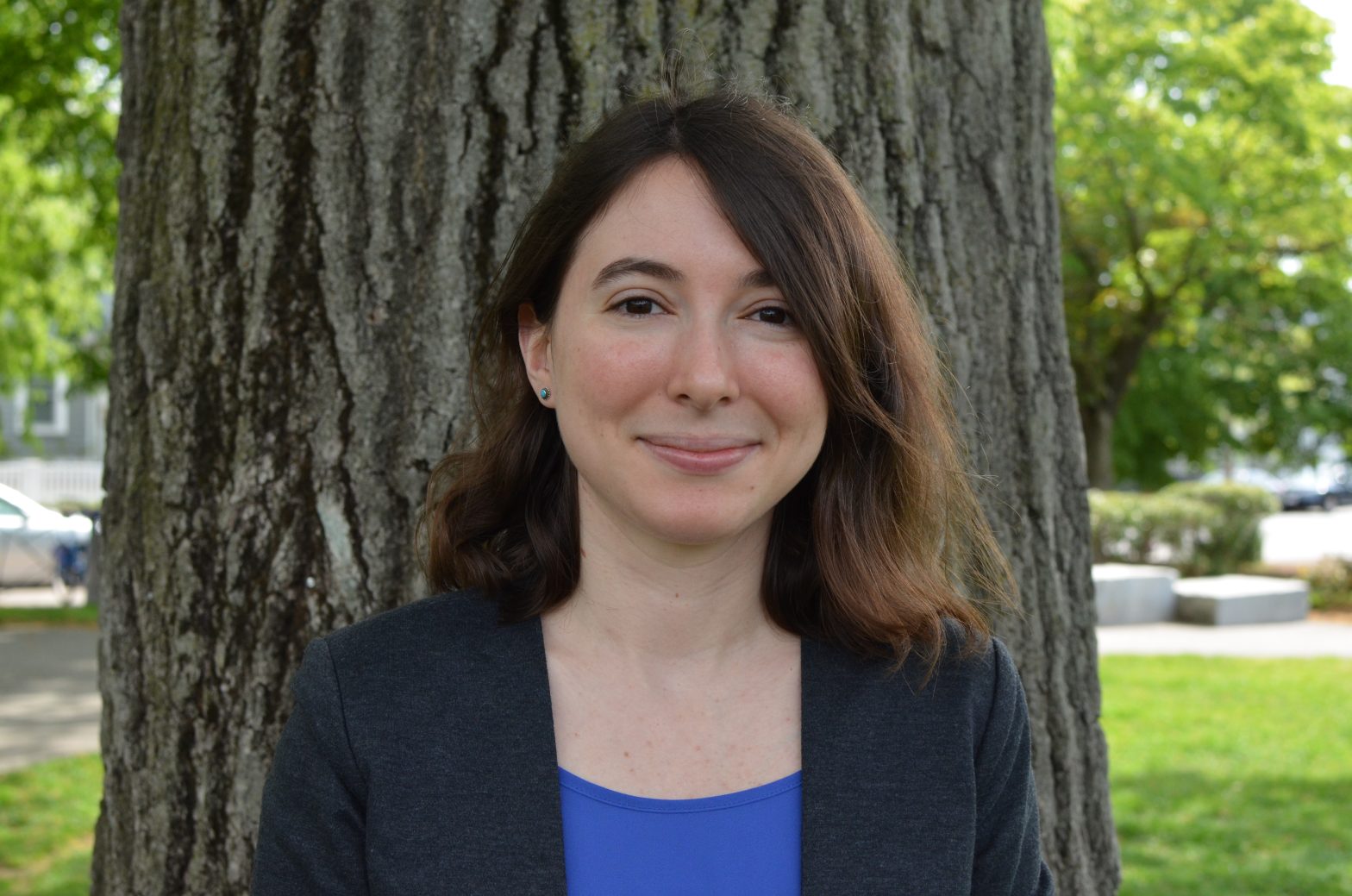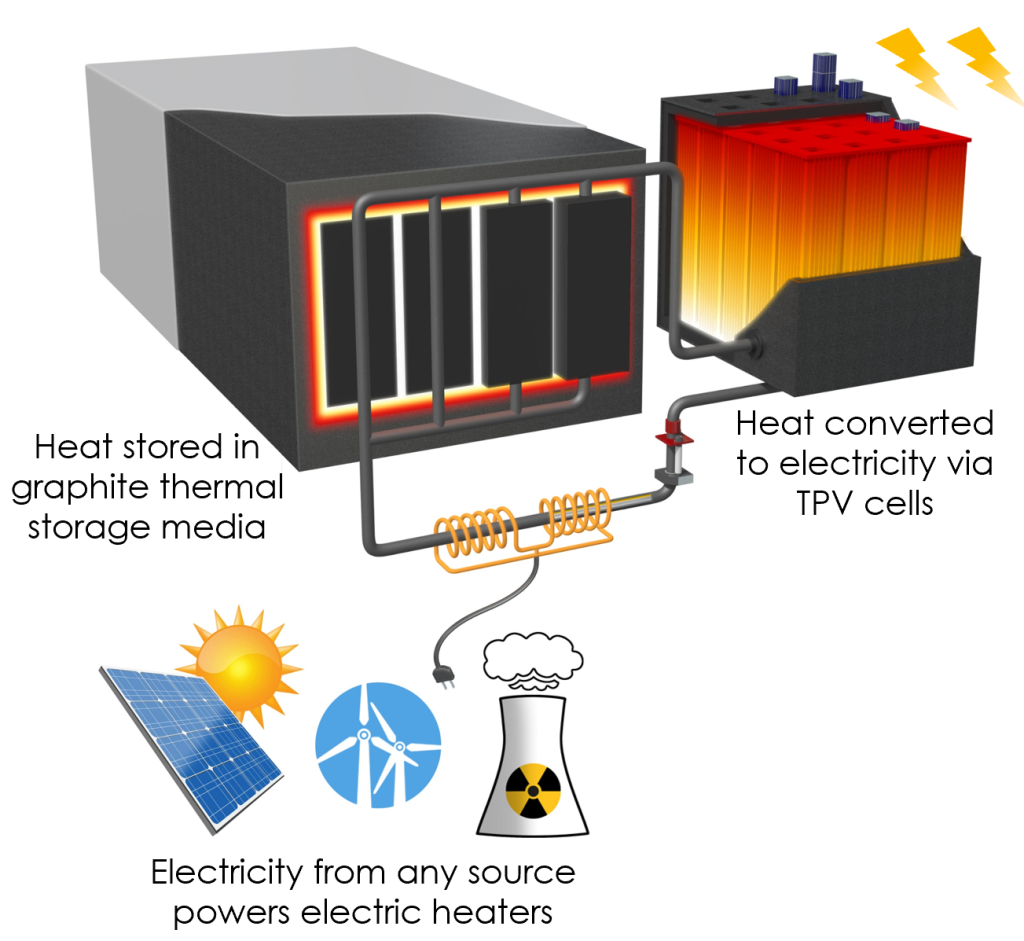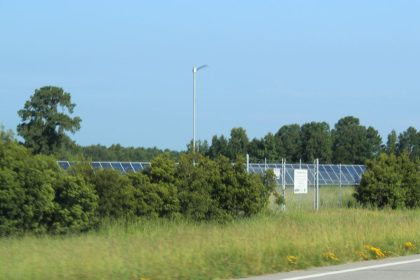MIT Researchers Seek Long-Term Storage Solution for Wind, Solar Sectors

CAMBRIDGE, Mass. — A team of Massachusetts Institute of Technology researchers is steadily exploring a once radical idea — using extreme heat to combat climate change — to create an entirely sustainable, grid-scale battery that can store solar and wind energy and deliver it to consumers at night and even over extended periods of cloudy and windless days.
Led by mechanical engineering professor Asegun Henry, the Atomistic Simulation & Energy Research Group studies heat transfer at the atomic level and strives to develop technologies that can help mitigate climate change.
Much of its work is being done under the auspices of the Department of Energy’s Advanced Research Projects Agency-Energy, or ARPA-E, a division that was designed to support high-risk, high-reward projects.
The team’s dream? To realize Henry’s dream of creating a supersized rechargeable battery — think something about half the size of a professional football field — that would store energy as a white-hot liquid metal.
Essentially, the system would work something like this: On any given day, a typical sun or wind farm creates power that is transferred to the grid for immediate use. Henry and the ASE team at MIT envision tying the solar or wind farm to a heavily insulated, warehouse-sized container where excess energy is captured and converted into heat.
Then, when energy demand increases or the sun or wind are not available, the liquid metal would be pumped through a converter to turn heat back into electricity.
In a series of papers, the team has already shown that key parts of the envisioned system work and work quite well. Now, they’re working to bring those elements together in a lab-scale system that could ultimately lead to a fully operable commercial-scale, grid-integrated system.
The Well News recently caught up with Alina LaPotin, one of Henry’s graduate research assistants in the Atomistic Simulation and Energy Research Group, for the latest word on the project.
LaPotin, a PhD student in mechanical engineering, said a longtime interest in renewable energy and climate change problems is what ultimately drew her to the area of energy storage.
“The more I read about the topic, the clearer it became to me that the storage problem is something we really need to solve if we want to get high percentages of renewable energy on our grid and actually decarbonize our electricity,” she said during a Zoom call.
“And one important area that we really haven’t figured out yet is long-duration storage of energy produced by intermittent sources like wind and solar,” LaPotin continued. “Right now there’s a lot of emphasis on lithium ion batteries, which will probably be the technology that dominates for storage at shorter durations of six hours or less, but when it comes to a situation where we want to rely on wind and solar for 80% or so of our energy, then we need to start thinking about longer duration energy storage technologies and technologies that are going to be cheap enough to compete with fossil fuel generation.”
TWN: So let’s start with the thermal energy storage technology you’re working on. I have sort of a thumbnail idea of how it all works. Could you describe it in a little more detail?
AL: Sure. Generally speaking, thermal energy storage technology works like any other battery — you have electricity coming in and you have electricity going out.
The difference is that in the intermediate, we’re actually storing energy as heat for conversion back to electricity at a later time. And the reason we’ve chosen to store it as heat is because that form of storage can be very cheap.
TWN: So how does that conversion take place?
AL: It’s just conventional joule heating. In essence, it’s the same thing that takes place when you power an incandescent light bulb. You have current flowing through some kind of resistive material and that creates heat and then we transform the heat into a liquid using a liquid tin as the heat transfer fluid.
TWN: Why does it have to be stored at a high temperature?
AL: The reason we use liquid tin is actually because we are storing heat at very high temperatures. And the reason we store the liquid heat at high temperatures is because, thermodynamically, it’s advantageous when you’re going back from heat to electricity to have your heat engine operating at a high temperature. You get a higher level of efficiency that way.
So, to convert the initial electricity coming in into heat, we use this liquid tin heat transfer fluid to transfer that heat to a bank of graphite storage blocks.
TWN: Graphite? Like in a pencil?
AL: Yes. And the reason we use graphite is because it’s both really cheap and can withstand very high temperatures. We’re targeting temperatures that are nominally between 1,900 C and 2,400 C, so we’re talking very, very high temperatures.
At this point in the process, the energy gets stored in these heated graphite blocks. That’s our storage medium.
TWN: So how do you discharge electricity from this storage system?
AL: To discharge the system and bring the power back to the grid, we need to convert the heat we’ve stored back to electricity. Now, most people would assume that to do that, we’d use some kind of conventional turbine, but we don’t do that.

Instead, we use a heat engine called a photovoltaic cell. And the reason for that is turbines rely on spinning materials and there are certain requirements that have to be met or the turbines fail. Most gas turbines, for instance, don’t operate above 1,500 C to 1,600 C.
So we’re using photovoltaics, which are good for this application because they’re solid state. We have no moving parts. What happens is, we pump that liquid tin heat transfer fluid through a sort of a heat exchanger which emits light at these photovoltaic cells, which are kept cold. These type of photovoltaic cells are call thermophotovoltaics (TPV), because our emitter is sort of a hot object on earth, and not the sun. So that’s basically how it works.
TWN: Well, I think I’m following you, but what I’m wondering is, don’t you lose some of this heat, just through all these processes occurring?
AL: Well, what you’re getting at is there is such a thing as a round-trip efficiency, And there is an efficiency penalty to doing any storage.
In our case, because we’re going from electricity back to heat and then back to electricity, there is a thermodynamic penalty associated with that.
In general, when we’re making electricity in the United States from turbines that process is on average only about 35% efficient, just because the laws of thermodynamics limit that efficiency.
Because of the nature of our technology we do have a lower round trip efficiency than some other technologies, so making up efficiency has to come at the electricity conversion step. We recently published a paper in which we demonstrated how we reached 41% efficiency, which was a really big step forward — previously we’d only reached 32%.
Our target now is to reach 50% efficiency, so that means our storage system round-trip efficiency is about 50%, which maybe doesn’t sound that great, but when you think about the economics, you can afford to have a lower round trip efficiency if your storage cost is very low, as in our case.
TWN: Earlier you touched on the relative cost to compete with other sources of energy. I’d like to double back to that for a moment …
AL: Well, the bottom line is everyone’s goal is to do energy storage as cheaply as possible. I mean, even if you’re talking about pairing a lithium ion battery with a wind or solar generator, the cost is too high for them to compete with a generator powered by fossil fuel.
There are projects that have been made that suggest for wind or solar paired with storage to be competitive with fossil generation, you need to get to capitol costs below $20 per kilowatt hour. Currently, lithium ion batteries are $300 a kilowatt hour. And with our technology we’re hoping to eventually get below $20 per kilowatt hour.
TWN: What about technology transfer? If and when you reach your goal. How will the team try to bring it to market?
AL: That’s an interesting question and it’s not something I have a lot of insight into. I would say that there’s a lot of interest in our energy storage technology and that there continues to be a lot of excitement about it.
Commercialization is one of our goals, and my PI, Dr. Henry just started a company, Thermal Battery Corporation, centered around our technology. So that’s pretty exciting.
I think things have been moving quickly since we published our paper on our reaching 41% efficiency, but there are a lot of things you need to show your project is ready to be commercialized and I don’t have a good handle on that yet.
TWN: One more question occurs to me. These storage facilities that you’re talking about are fairly large. Do you envision them being co-located with wind and solar farms, or closer to community or facilities that you would be providing power to?
AL: That’s a good question. I think we’re thinking more about co-location with a large wind or solar farm. And the reason is, it would probably make more sense to co-locate in an area that’s sort of more of an industrial site already. There are a lot of obvious advantages to that.
At the same time, I think a lot of renewable energy project developers are also looking to pair their technologies, their renewables, with storage … and looking at ways to include on-site storage for these large scale projects — which is what we’re aiming for as well, serving larger scale projects of 100 MW or more.
Another idea could be to locate with certain industrial process that could benefit from our stored heat purely as a heat source. I mean, decarbonizing certain industries, like steel-making, is very challenging because there are certain intrinsic processes involved in those industries that create CO2.
And a big part of that is the amount of heat those industries, things like steel-making and cement-making, require to make their products.
So there could be a way perhaps that we could co-locate with those facilities and they could take advantage of our stored heat – which is created from renewable resources — when we’re not using it to send electricity back to the grid. It’s an interesting application to think about.
TWN: So, what about you? Right now you’re a graduate research assistant in this field. What does the future hold for you?
AL: I am definitely interested in seeking this technology succeed, and continuing to be involved in the work is something that I want to do. I mentioned earlier that Dr. Henry has started a company, so potentially I could be involved in that. But if not, in general, I would say I plan to stay involved in technologies related to energy, and the energy transition space, and climate change mitigation. I’m interested in all that. And there are a lot of really exciting companies starting out in this area.
Dan can be reached at [email protected] and at https://twitter.com/DanMcCue.























